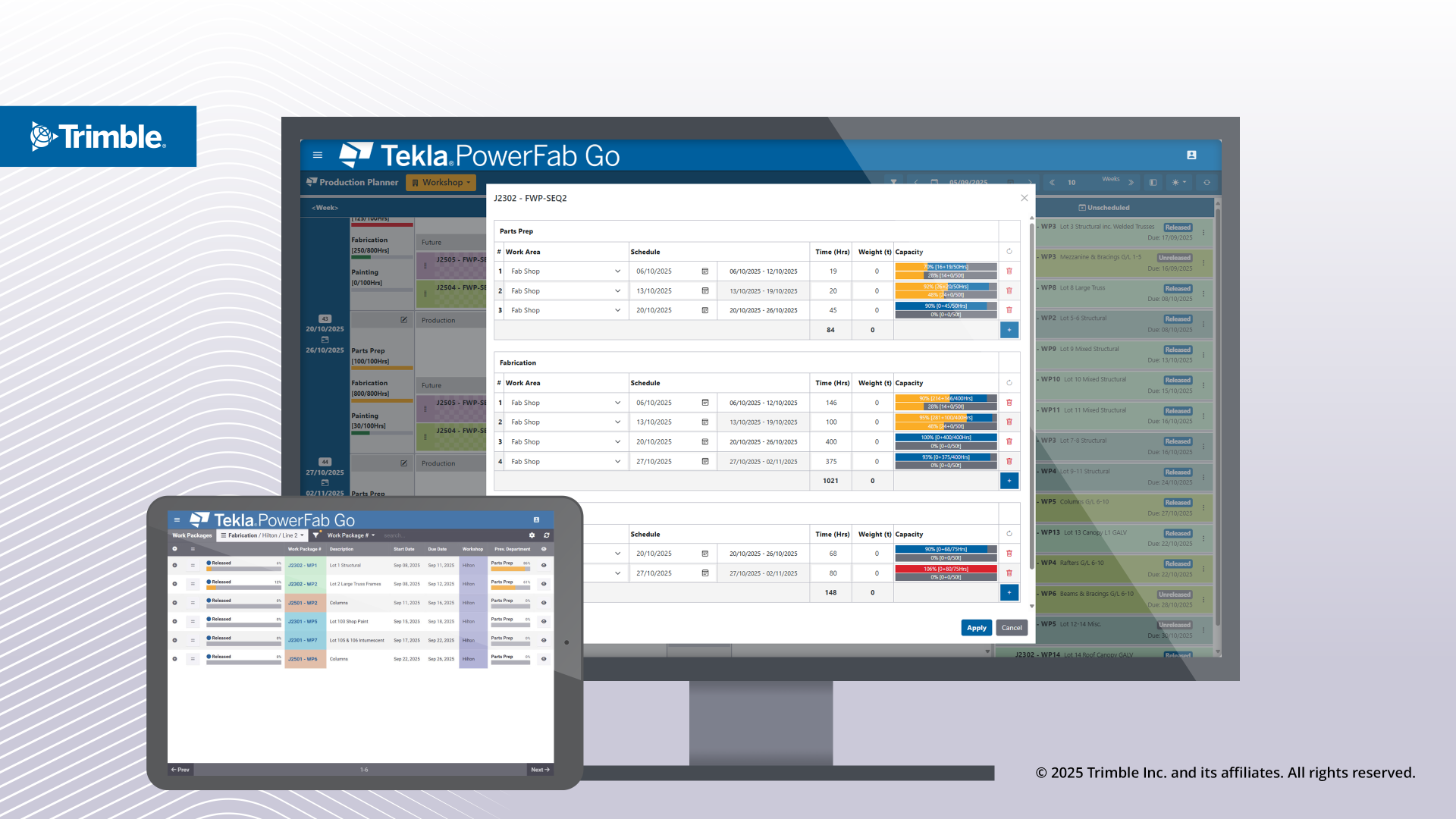
As a structural engineer, you and your team design and analyze physical structures every day. Even so, has your firm ever re-engineered its internal business processes?
The accurate data that a building information model (BIM) can provide is one of the best resources for improving your company’s project management. By transitioning to a BIM structural design approach, you can improve accuracy, detect clashes earlier, and foster collaboration and integration with architects, fabricators, contractors and all other stakeholders.
As with any business, structural engineering firms focus their energy on satisfying customers by completing their current projects. At the same time, they work to build a pipeline of future clients to keep the firm in business.
Concentrating exclusively on project delivery and business development can lead you to miss opportunities to improve your internal workflows. As a result, your firm may be less profitable than it could be.
Automating your firm’s design and analysis tasks helps your business work smarter. When your team commits to adopting constructible design principles from the beginning of the design phase, they’re better positioned to take advantage of digital ways of working.
Working with industry-standard applications from the early stages of your design process makes it easier to repurpose design intent information, consider alternatives, and deliver more accurate data faster.
When you know your data is reliable, you complete your design and construction tasks more confidently. You can produce a range of drawings and deliverables that are more accurate and comprehensive. In fact, you can use 3D modelling to create a genuine digital twin of the structure you envision.
Constructible Design Simplifies Project Management
Today’s project owners often feel intense pressure to move quickly. As a result, many construction projects get fast-tracked, with pre-construction, and sometimes onsite work, getting started while the design engineers are still hard at work.
It’s a fact of life that land costs more than people’s time. So, developers want to “get out of the ground” as quickly as possible and see tangible results.
As an added complication, supply chain issues have made material costs more volatile in recent years. Structural engineers need more flexibility to identify changes required and respond appropriately.
These challenges are familiar to seasoned structural engineers. Even so, they add obstacles and complications that constructible design principles can help clear away.
When your structural engineering firm depends on fee-per-project billing, extra time spent on recalculation and redesign eats into your profit margins. Delays completing one assignment also prevent engineers from shifting to their next project, complicating staffing.
The key to meeting all project stakeholder needs in these demanding conditions is timely access to accurate information.
Terms like “BIM” and “constructibility” have become engineering buzzwords, but their potential is real. However, achieving that potential calls for more than producing a 3D model.
An authentic constructible model views all pertinent, existing data as a vital workflow element from the beginning of the design stage. Constructibility as a principle arises even before your team starts modelling its structure.
Structural designers now have a wide range of analysis and design tools at their disposal. They’ve moved beyond updating various spreadsheets by adopting design and BIM analysis applications.
These advanced software tools automate many structural engineering tasks and deliver greater accuracy and versatility. Designers can often begin simulating their physical structure as part of their analysis and design work.
Streamline Entire Design-Build-Operate Process
In a way, structural engineers and detailers have always produced drawings and structural models. The value that today’s 3D BIM models add comes from faster work processes, improved collaboration and simplified recalculations. Building information models deliver the accuracy, automation and speed that all building stakeholders need to take a structure from concept to construction.
For example, structural engineers consider loads and forces, building codes, site conditions, sustainability and a range of other factors from the beginning of the design phase. They may even develop a series of options and alternatives, along with estimates.
These activities produce a treasure trove of documentation, but that data is fragmented and dispersed in various documents and repositories. Information can be overlooked or lost, leading to RFI’s, costly mistakes and rework. You can avoid these headaches by using the right tool for the job from day one.
Change management and version control are also harder to manage with scattered project data. Following constructible principles during the design and analysis stages delivers reliable, up-to-date information to all stakeholders throughout the entire construction project.
Transform Construction Projects Through Constructible Process
When you adopt constructible design principles, you streamline more than just the design and analysis processes for a structure. Using BIM software for your building design improves workflows throughout all construction project phases by providing stakeholders with a sharable, information-rich, 3D constructible model.
Your BIM’s highly accurate design data can simplify procurement, fabrication, material delivery, clash detection and many other project processes. During the bidding phase, contractors have more confidence in BIM-based tenders, improving their participation and their bid quality.
The constructible process delivers security and productivity to onsite contractors and tradespeople. As a result, structural engineers who adopt constructible design principles deliver added benefits to clients and stakeholders.
BuildingPoint is committed to a building information modelling process that all stakeholders can use at any phase of the design, build and operate lifecycle of any structure.
Why not contact BuildingPoint today to discuss how our constructible process tools can help your structural engineering firm deliver sharable building designs more accurately, efficiently and profitably?
Latest Posts
Tekla PowerFab 2025i: New features and integrations now available
The 2025i version of Tekla® PowerFab® is now available, delivering new tools to help fabricators plan more accurately, manage projects…
Join BuildingPoint Canada at the 2025 CEC Annual Fundraising Golf Tournament
Join BuildingPoint Canada and the CEC for the 2025 CEC Annual Fundraising Golf Tournament. It will be a special day…
6 Hot Topics Everyone in Construction Is Talking About
The construction world has been buzzing lately, and not just from the sounds on the jobsite. There’s been a ton…
